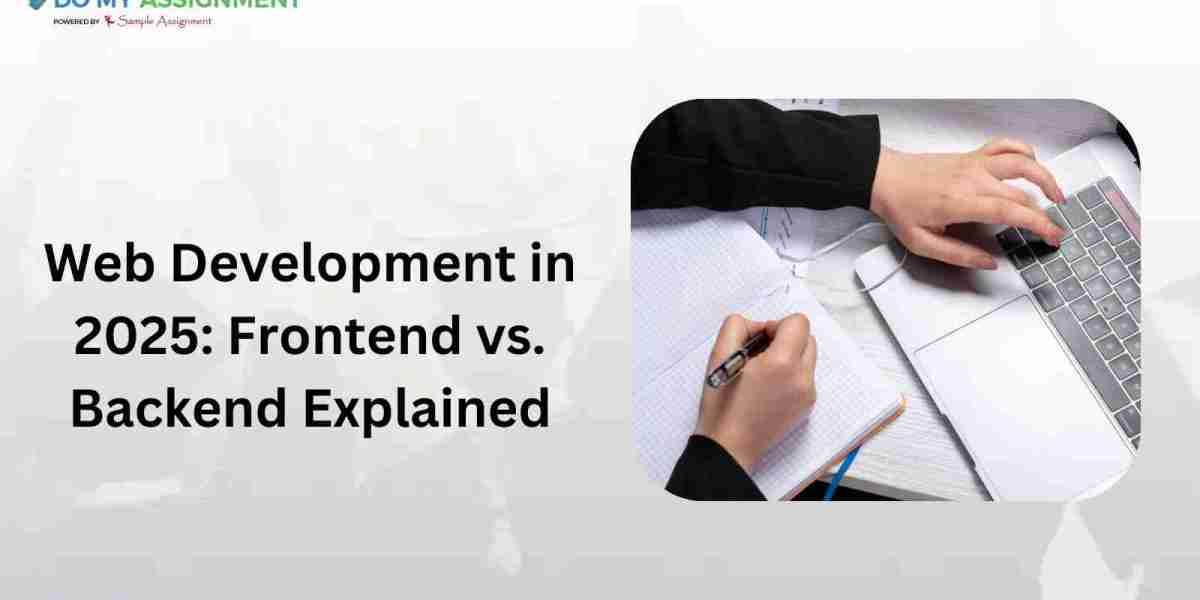he world of web development is rapidly evolving, with new technologies and frameworks emerging each year. As we move into 2025, understanding the distinction between frontend and backend development is more crucial than ever for aspiring developers and businesses looking to build efficient digital solutions. This blog explores the key differences between frontend and backend development, the latest trends in both fields, and how professional help can make mastering these skills easier.
Understanding Frontend Development
Frontend development focuses on the user interface (UI) and user experience (UX) of a website or web application. It involves everything that users see and interact with directly. The primary goal is to create a responsive, interactive, and visually appealing interface.
Key Technologies in Frontend Development:
HTML5: The backbone of web content structure.
CSS3: Used for styling and designing web pages.
JavaScript: Adds interactivity and dynamic features.
React, Angular, Vue.js: Popular JavaScript frameworks for building complex UIs.
WebAssembly: Enhances performance for web applications.
Latest Trends in Frontend Development (2025):
Progressive Web Apps (PWAs): Offering app-like experiences on the web.
Motion UI: Engaging animations and transitions.
AI-Driven Design: Personalizing user experiences.
Voice User Interface (VUI): Integrating voice commands for accessibility.
Understanding Backend Development
Backend development involves the server-side logic that powers websites and applications. It manages databases, servers, and application logic to ensure seamless functionality behind the scenes.
Key Technologies in Backend Development:
Node.js, Python, Java: Popular programming languages for backend services.
Databases: SQL (MySQL, PostgreSQL) and NoSQL (MongoDB) for data management.
APIs: RESTful APIs and GraphQL for communication between frontend and backend.
Cloud Computing: AWS, Azure, and Google Cloud for scalable hosting solutions.
Serverless Architecture: Reducing server management overhead.
Latest Trends in Backend Development (2025):
Microservices Architecture: Enhancing scalability and maintenance.
Serverless Computing: Reducing operational complexities.
AI and Machine Learning Integration: Automating backend processes.
Edge Computing: Improving performance by processing data closer to users.
Key Differences Between Frontend and Backend Development
| Feature | Frontend Development | Backend Development |
|---|---|---|
| Focus | User interface and experience | Server-side logic and database management |
| Languages | HTML, CSS, JavaScript, React, Angular | Python, Java, PHP, Node.js |
| Tools | Adobe XD, Figma, Webpack | Docker, Kubernetes, AWS, SQL Databases |
| Primary Goal | Visual appeal and interactivity | Functionality and data processing |
Bridging the Gap: Full-Stack Development
In 2025, full-stack development continues to gain popularity. Full-stack developers handle both frontend and backend tasks, providing end-to-end solutions. This approach is efficient for startups and businesses aiming to streamline development processes.
Overcoming Challenges in Web Development
Learning web development can be challenging due to the vast number of technologies and tools involved. Students often search for solutions like Do My Programming Assignment to manage their workload efficiently. These services provide expert assistance, ensuring timely submissions and high-quality code.
On the other hand, broader academic tasks can also become overwhelming. Services like Do My Assignment support students by delivering well-researched, plagiarism-free content across various subjects, allowing learners to focus on building practical skills.
Tips for Aspiring Web Developers
Master the Basics: Solid understanding of HTML, CSS, and JavaScript is essential.
Learn Modern Frameworks: Gain expertise in tools like React, Vue.js, or Angular for frontend and Node.js or Django for backend.
Understand Databases: Learn SQL and NoSQL databases for effective data management.
Work on Projects: Apply your knowledge by building real-world projects.
Seek Expert Help: Don’t hesitate to get professional guidance to strengthen your coding skills.
Conclusion
As web development continues to evolve in 2025, understanding the roles of frontend and backend development is vital for creating seamless digital experiences. Whether you need support with coding tasks through Do My Programming Assignment or require broader academic assistance via Do My Assignment, expert guidance can significantly accelerate your learning journey. Embrace these opportunities, stay updated with industry trends, and build a strong foundation to thrive in the ever-changing world of web development.



